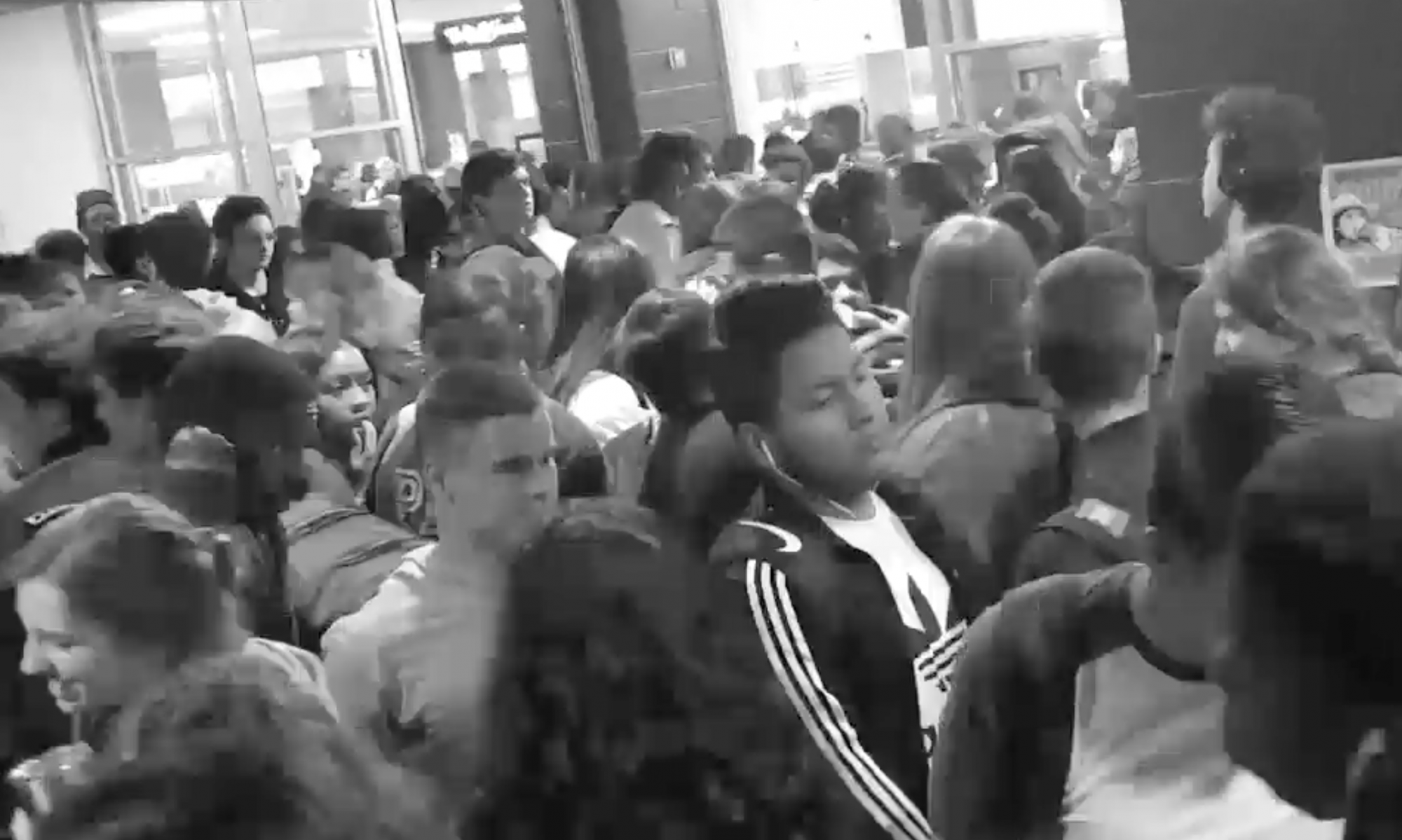This plan would shuffle children among HCPS schools so that 6th graders would attend elementary schools in a K-6 configuration, 9th graders would attend middle schools in a 7-9 configuration, and 10th-12th graders would attend HHS on Garber’s Church Road. With the 6th/9th Grade Shuffle, every school would be affected by staffing and enrollment changes. Also, additional redistricting may be needed to balance distribution of these new enrollment populations across the system.
It doesn’t solve the fundamental current overcrowding problem.
According to demographic projections, 3 years after building a new elementary school and shuffling grades among buildings throughout the system, HHS on Garber’s Church again will exceed capacity of 1,350.
Who has proposed it?
Former Harrisonburg City Council member George Pace began floating this idea in 2016, suggesting, for example, that the city consider buying Pleasant Valley Elementary School from Rockingham County to begin the shuffle. Current supporters, according to the DN-R, appear to include Council member Ted Byrd.
Why has it been proposed?
During the past 3 years of analysis and study, the over-crowing problem in HHS has become acute, with nearly 1,800 students attending a school built for 1,350. Acquiring or building another elementary school and shuffling grades among HCPS buildings is said to cost fewer construction dollars in the short run than building a second high school, and could potentially open sooner. However, planning for a second high school has been underway since spring. No planning has begun for a seventh elementary school.
Would Rockingham County sell Harrisonburg Pleasant Valley Elementary School to Harrisonburg?
As of early 2017, no.
Where would a seventh elementary school be built?
No planning has taken place.
How would this plan affect 6th graders?
Sixth graders would have access to fewer course electives and fewer extra curricular activities, losing a year of access to these opportunities. Currently, sixth graders can place into the 6-8 math curriculum and participate in drama, FLEX, band/strings, technology, cross country, track, family and consumer science, cheerleading, specialized after school programing, and age-appropriate SPED and after-school programing. These opportunities cannot be replicated across seven separate elementary schools.
How would this plan affect 9th graders?
Today, a “ninth grader” does not exist in the traditional sense. Ninth grade is best understood as a status rather than an age. Ninth grade status is held by anyone who has fewer than 6 credits toward a diploma, and/or who is new to the US and does not have a transcript, or who has a transcript that needs to be transferred to the US. Given this definition, the age demographic of students who had 9th grade status in HCPS for 2016-17 was:
14 years old = 108 total students
15 yo = 294 ts
16 yo = 51 ts
17 yo = 27 ts
18 yo = 12 ts
19 yo = 4 ts
Last year, registration requests from students with 9th grade status involved more than 90 different courses (8 different math and 7 different English possibilities). These requests included upper level classes for advanced 9th grade learners, leveled courses for English language acquisition, and language supported sections of courses in core classes. For the majority of these courses in a 7-9-grade configuration, there would not be enough 9th grade students to run and staff the classes. Also, 9th graders would not have access to a wide array of electives, including journalism, debate, computer information systems, JROTC, Band/choir, visual arts, dance, tech education, and more.
How would this plan affect staff and other students in the HCPS system?
Sixth grade teachers would be dispersed throughout the city to 1 new + 6 existing elementary schools. 9th grade teachers would move to THMS and SKMS. Very young children would be attending school with older students; 4 year old PK students would be in the same building with 12 year old 6th graders. We would expect to see some change in SOL scores, in that data shows that the 5th grade move to the middle school in the past negatively affected some student’s academic performance.
Why has the Harrisonburg City School Board not supported this idea?
At this point, because this decision has been delayed for so long, we must plan for the future while we alleviate the short term effects of overcrowding on current HHS students.
The 6th/9th Grade Shuffle Plan would not be a temporary solution.
Any postponed decision years down the road to build a second high school becomes more and more expensive, more and more difficult, and thus more and more unlikely. It effectively commits HCPS to a 10-12thgrade mega school over the long run.
The known operational costs of the 6th/9th Grade Shuffle Plan are large and neutralize most of the potential short-term construction costs advantages of building another elementary school instead of a second high school.
Most importantly, the plan takes away a wide variety of existing educational opportunities for children. The earlier students engage in learning, the more likely they are to complete and succeed. The shuffle plan threatens to reverse some of the educational achievements we’ve made system-wide over the last decade, and would make it harder for HCPS to achieve their goals and mission, which is to make all our schools a place where learning has no limits and together we work for the success of all.

